Autumn and winter has been great this year for finding greenhood orchids. They are characterised by a rosette of leaves (sometimes only two) on the ground with a bright green colour. In my walks along the track at Apple Tree Bay seeking out the perfect acianthus photograph I have seen the telltale rosettes. Just have to keep coming back to check them out.
A walk along Apple Tree Bay starts with a bike ride down the hill and into the National Park. I mostly do these rides earlier in the day but this one is late afternoon. That makes for different light on the boats moored at the boat ramp.
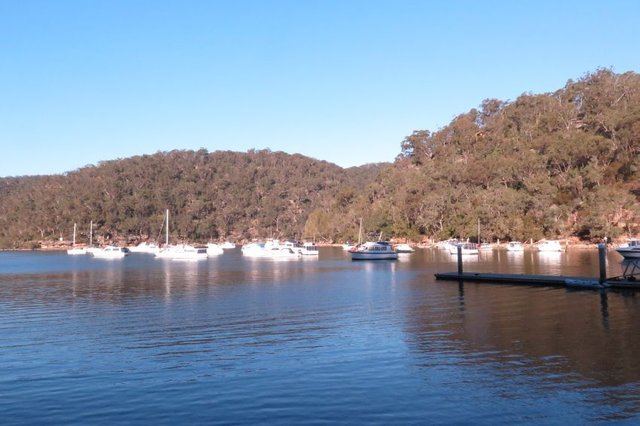
Taken at f/8, 1/800 sec, ISO-800
The track runs directly above the bank of the estuary between 1 and 5 metres (3 to 15 feet) above the water. First sighting was not far from where the track begins of a flower taking shape.
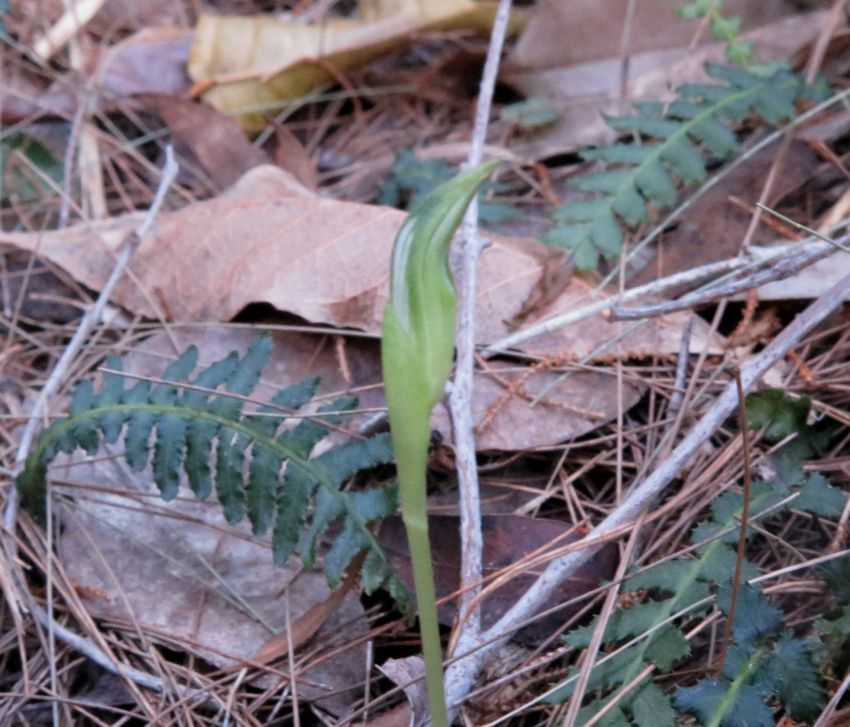
Not possible to tell what the type is from this photo - it is a greenhood. The flower is a very modified form of orchid with the dorsal sepal fused with two lateral petals to form a helmet-like hood (called a galea = the Latin word for helmet). Next along is a flower a bit further on in development. The galea is somewhat translucent with greenish tinge lining the length of it and a few brown/red colourings near the tip. Bottom left of the picture you can see a rosette of two leaves
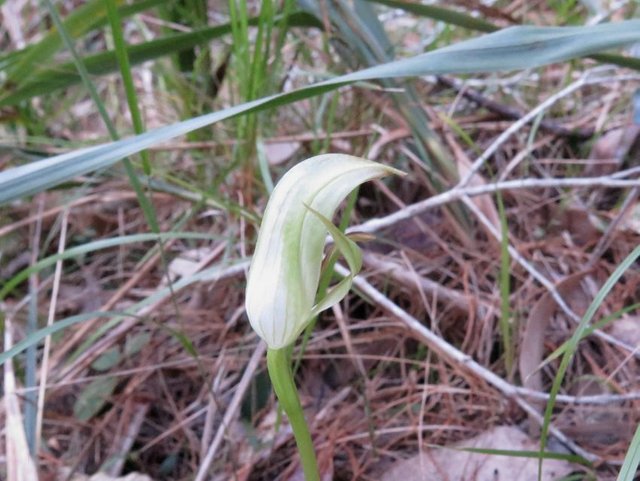
The labellum has the same brown/red tinges and sticks out like a tongue and the lateral sepals fold out and away with a curve - the tips do not pass the top of the galea.
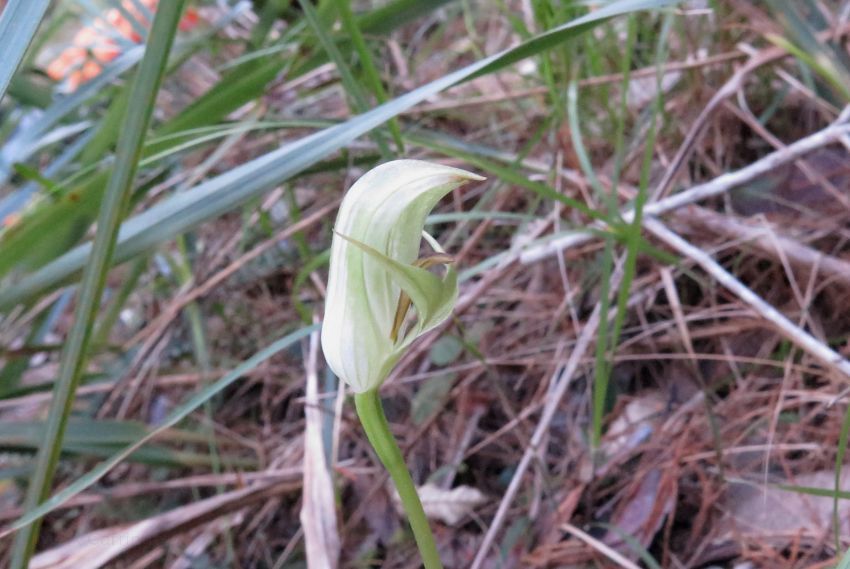
The next photo shows the V-shape formed by the lateral sepals.
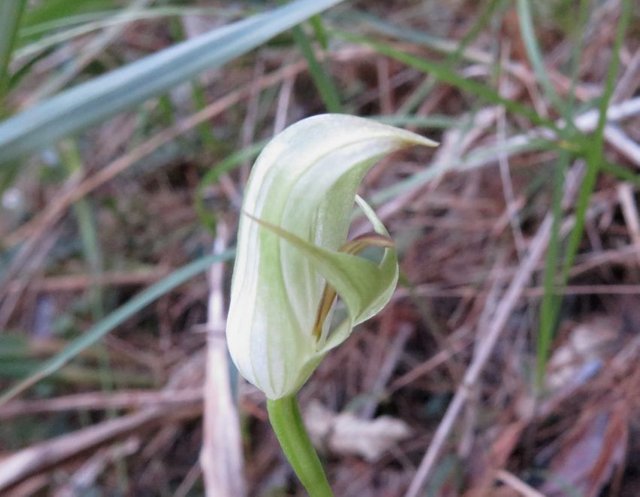
Hard to tell from the photograph if this is a shallow V or a deep V. Slowly piecing together the elements helps in identification between Pterostylis curta and Pterostylis hildae. Both can be found in this location.
The front on photograph carries the next telling clue - the labellum is pushed forward and twisted in a half twist. This tells me the answer.
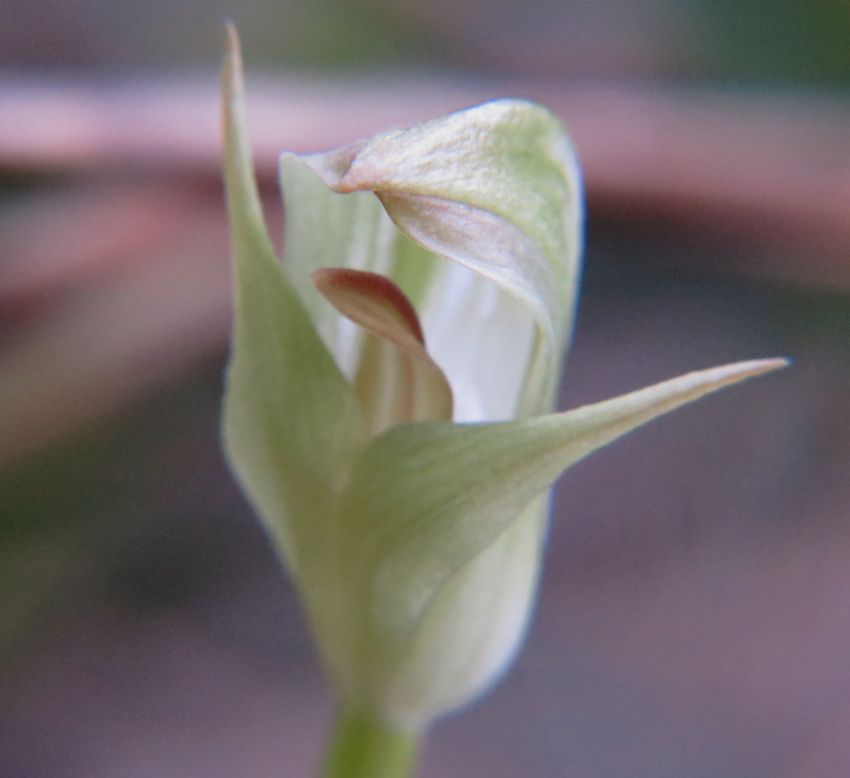
Blunt Greenhood orchid - Pterostylis curta
http://plantnet.rbgsyd.nsw.gov.au/cgi-bin/NSWfl.pl?page=nswfl&lvl=sp&name=Pterostylis~curta
Now for the photography challenge of getting enough pictures with at least one element in focus. This one has the focus on the apex of the V shows very clearly how the sepals do not extend beyond the galea.
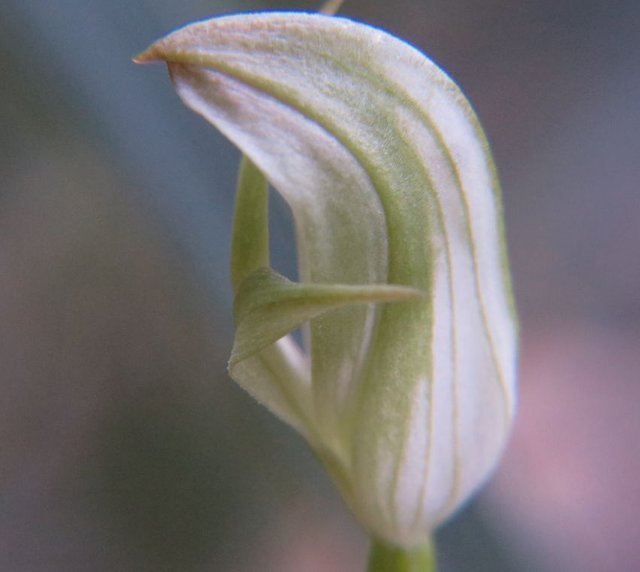
The next one from front on of a different flower (note how much greener the galea is). The twist of the labellum is beautifully in focus. And hiding behind that is the yellow flash of the column. Now pollination for the flower is interesting. Pollinators are small flies and mosquitos. They are attracted to the galea by smell. They fly around inside the hood and the labellum folds back and traps them inside. Two outcomes - they deposit pollen they are carrying or they carry pollen away with them.
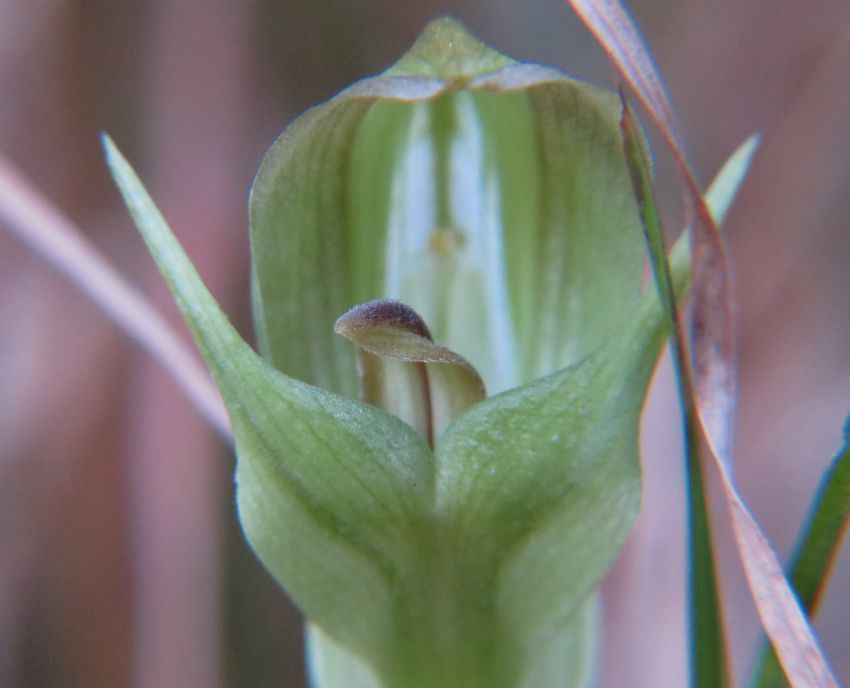
Somehow the photography challenge of getting the column in focus eluded me. The flower is the size of a broad bean - hard to even see the column with the naked eye.
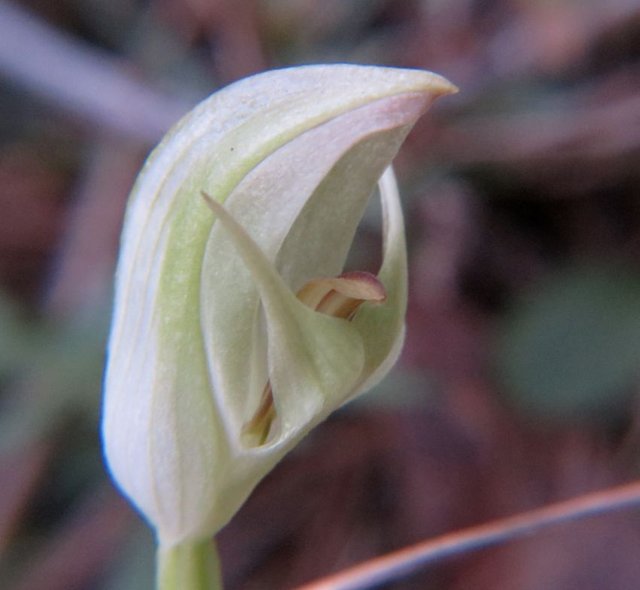
The angles from down below tell me I have to photograph more from above.
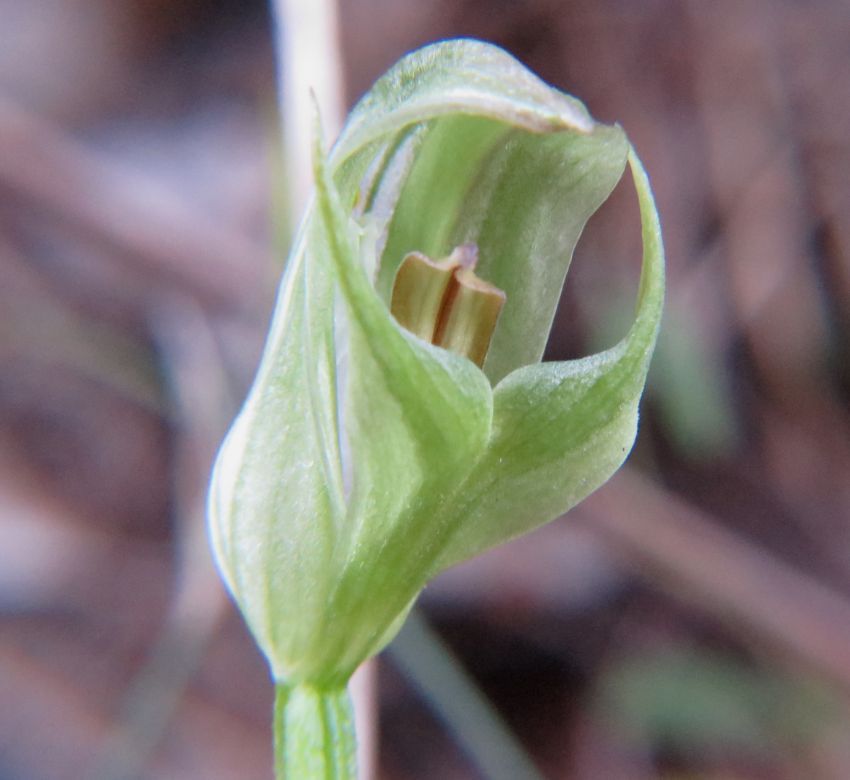
Taken at f/8, 1/800 sec, ISO-800
And I did find an acianthus to photograph.
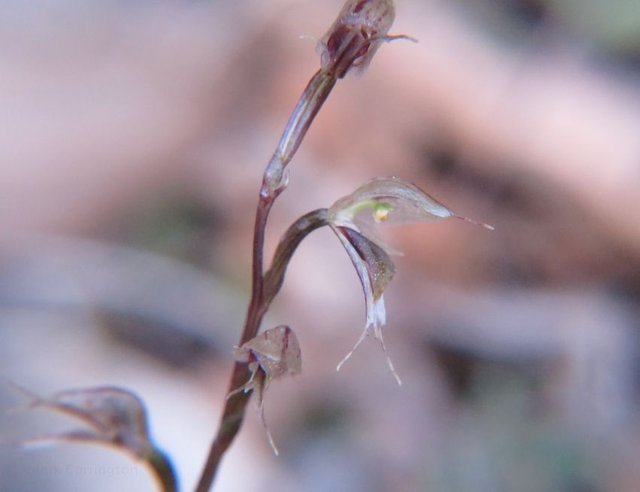
This has been an enigma for me to get right in all the times I have photographed them. Focal point is somewhere on the hood. I like the drops of water showing up there. The forward arching column is showing up well from the side on angle - what is amazing is that it is showing through the hood. Maybe my best photo of an acianthus orchid.
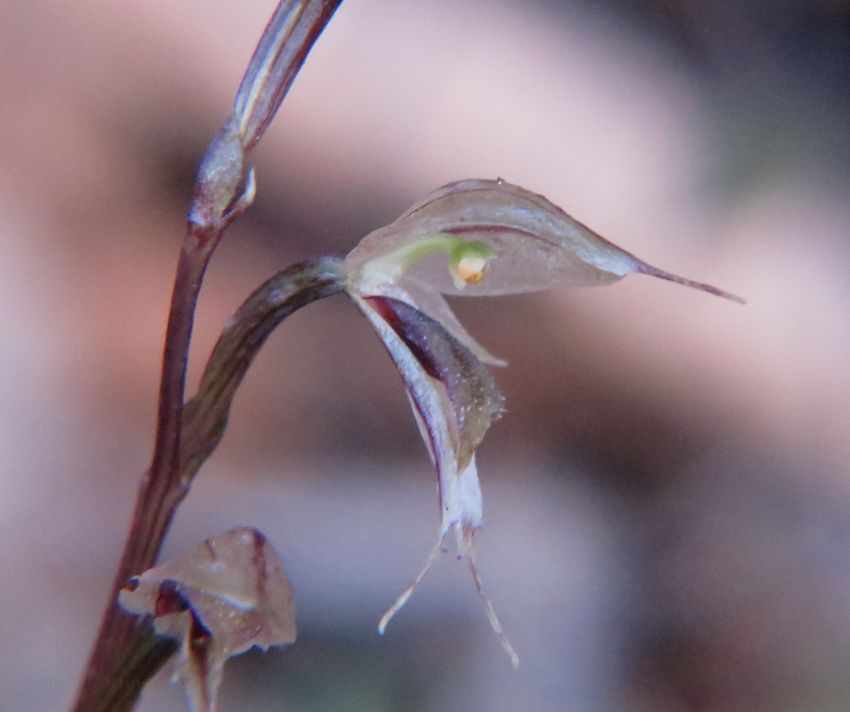
Pixie Caps orchid - Acianthus fornicatus
http://plantnet.rbgsyd.nsw.gov.au/cgi-bin/NSWfl.pl?page=nswfl&lvl=sp&name=Acianthus~fornicatus
Taken at f/5.6, 1/100 sec, ISO-1600
With those settings I might well have been able to close aperture down two f-stops and take at 1/40 sec and get more in focus. Next time I will experiment a bit more - I do know that ISO-1600 is the highest that can go - higher gets too noisy.
And then to end the walk some late afternoon photographs of Apple Tree Bay
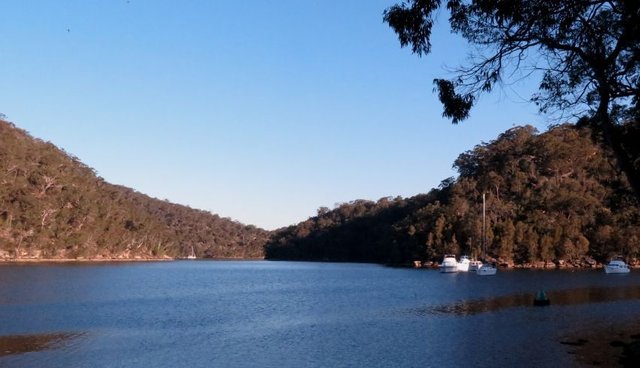
It is a special day to celebrate what would have been my parent's 70th wedding anniversary. My father loved the Australian bush whenever he visited. I was not living around this part of Sydney the last time he visited.
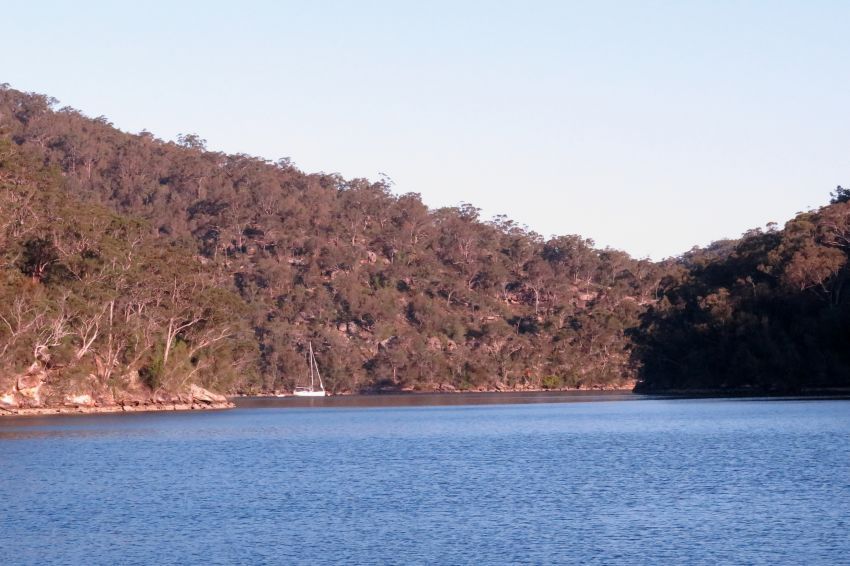
Photos taken with Canon Powershot G16 on August 22, 2017.
All the work you done here is awesome.
Upvoted you for your best post.
Do check me @zahidzzs
Follow and upvote back if you like my work too.
@zahidzzs
Downvoting a post can decrease pending rewards and make it less visible. Common reasons:
Submit
That is such a beautiful way to have remembered your parents anniversary. I'm always in awe of people who know so much about flowers. I am hopeless in that arena :)
Downvoting a post can decrease pending rewards and make it less visible. Common reasons:
Submit
Thanks. Easy enough to learn. I started two years ago. Focus on one type or one theme and begin there. Example: focus on yellow flowers for a while - learn - then move onto purple when the season does too.
Downvoting a post can decrease pending rewards and make it less visible. Common reasons:
Submit
That's excellent advice. I might make it a new years resolution to learn more about plants <3
Downvoting a post can decrease pending rewards and make it less visible. Common reasons:
Submit